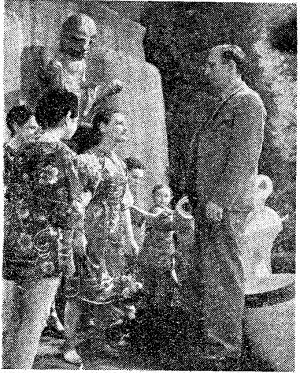|  | | | | 

| | “La otre muerte”
English title: “The Other Death” (translated from Spanish)
by Jorge Luís Borges
First publication: El Aleph, 1949

 I’ve read many translated stories of Jorge Luís Borges, and many of those have surreal time elements, but this is the only one that I’ll deem to have time travel with a sophisticated branching universe, no less! I’ve read many translated stories of Jorge Luís Borges, and many of those have surreal time elements, but this is the only one that I’ll deem to have time travel with a sophisticated branching universe, no less!

In the story, Borges himself tells of a man, Dom Pedro Damián, who first has a history as a soldier who lost his nerve at the 1904 Battle of Masoller and then lived out a long, quiet life. But after Damián dies some decades later, a second history appears in which the soldier was actually a dead hero at that very same battle, and no one remembers anything of the earlier life.

Motivated by the final part of Dante’s Divine Comedy, Borges argues that the only complete explanation involves God granting a death-bed wish to the 1946 Damián, allowing him to return to the 1904 battle, causing time to branch into two universal histories, the first of which is largely—but not wholly—suppressed. In the fifth chapter of that treatise, Pier Damiani asserts—against Aristotle and against Fredegarius de Tours—that it is within God’s power to make what once was into something that has never been. Reading those old theological discussions, I began to understand Pedro Damiá;’s tragic story. In the fifth chapter of that treatise, Pier Damiani asserts—against Aristotle and against Fredegarius de Tours—that it is within God’s power to make what once was into something that has never been. Reading those old theological discussions, I began to understand Pedro Damiá;’s tragic story. 
| |
| | | | |

 
 | | | |  the traveller, played by Russell Napier, meets the Eloi the traveller, played by Russell Napier, meets the Eloi

| | BBC’s The Time Machine
adapted by Robert Barr
First episode: 25 Jan 1949

 The first tv broadcast of The Time Machine, a litle less than an hour, came live from the BBC’s Studio A at Alexandra Palace on 25 Jan 1949 with a second revised broadcast on 21 Feb 1949. The first tv broadcast of The Time Machine, a litle less than an hour, came live from the BBC’s Studio A at Alexandra Palace on 25 Jan 1949 with a second revised broadcast on 21 Feb 1949.

Seeing as how there are no recordings of the broadcast, I wish I had my own time machine so I could send my Betamax® back to 1949. In the first showing, after a brief interval in which the hands of the wall-clock recorded the passing of many hours, the lights began to dip and rise to indicate the passage of the days, and as this effect speeded up the walls of the room gradually dissolved. In the second performance this was cut out, killing the impression of fast-moving time. But, outside, the sun moves ever more swiftly across the sky until it is a continuous band of light, rising and falling to indicate the equinoxes, and throwing into vivid relief the changing shapes of successions of buildings which become more startlingly futuristic as the Traveller flashes through the ages. In the first showing, after a brief interval in which the hands of the wall-clock recorded the passing of many hours, the lights began to dip and rise to indicate the passage of the days, and as this effect speeded up the walls of the room gradually dissolved. In the second performance this was cut out, killing the impression of fast-moving time. But, outside, the sun moves ever more swiftly across the sky until it is a continuous band of light, rising and falling to indicate the equinoxes, and throwing into vivid relief the changing shapes of successions of buildings which become more startlingly futuristic as the Traveller flashes through the ages. 

—Thomas Sheridan in Fantasy Review, Apr/May 1949
| |
| | | | |

 
 
 
 
 
 
 
 
No Time Travel. Move along. |
“I, Mars” by Ray Bradbury, Super Wonder Stories, Apr 1949 [despite appearances, no time travel ]
aka ‘Night Call, Collect’

“The Wall of Darkness” by Arthur C. Clarke, Super Science Stories, Jul 1949 [despite appearances, no time travel ]

“Time Heals” by Poul Anderson, Astounding, Oct 1949 [long sleep ]

| |     |